ROBERT VERKAIK ASKS WHY SOLICITORS HAVE OPTED TO USE DRAFTSMEN AGENCIES, FREELANCERS, OR TO BUILD AN IN-HOUSE DEPARTMENT.At the close of a prolonged piece of litigation, when the court's attention has turned to the issue of costs, lawyers perform their own version of High Noon.
Unwilling to accept the other side's calculation, the lawyers eyeball each other across the courtroom, leaving no alternative but for the dispute to go before a taxing master.Quite often it is the litigator with the best legal costs draftsman who wins the shoot-out or has the confidence to call his opponent's bluff.The Lord Chancellor's consultation paper on costs, published in August, places great emphasis on the 'conduct of parties' in a case.
Many costs draftsmen maintain this will lead to more grounds for challenging the other side's costs.
In other words, more Gary Cooper-style shoot-outs in the High Court over costs.This means good costs draftsmen are going to be in even greater demand.
All litigation law firms need costs draftsman and all lawyers know that a good legal costs draftsman can save a client money.But when it comes to drafting a costs bill to go before the court, consideration needs to be given to whether the law firm should use an in-house department or go outside to one of the many specialist drafting agencies or independent freelance draftsmen.Despite the administrative costs involved in running any in-house department - a spokeswoman for the Association of Law Costs Draftsmen (ALCD), freelance draftsman Shirley Dean, stresses that secretarial support is essential even for a single draftsman -- in-house draftsmen are not the preserve of rich firms.
Several top City giants choose only to use outside agencies and many small firms scrabbling in the legal aid franchise pile employ several in-house draftsmen to handle the work generated by their exclusively contentious practices.In addition, firms with in-house capacity still find themselves turning to agencies when they need specialist expertise in an area of law not commonly handled by the firm, in a particularly complex piece of litigation, or when a piece of work needs to be turned around quickly.
John Berry, managing director of draftsmen agency Berrys, says: 'Firms with their own in-house departments tend to turn to us when they are snowed under with general work.'And the secretary of the ALCD, in-house draftsman Paul Carter, says: 'Some firms feel they get more flexibility from an independent draftsman.'City firm Stephenson Harwood has chosen only to use external draftsmen.
Litigation partner Ken Duncan says: 'We get a greater breadth of experience by using outside people.
They only do taxation of costs in contentious work.
When we had our own in-house department the staff spent a lot of time giving advice on the firm's own bills and drafting, as well as contentious work.
Now we do the firm's billing ourselves.'For more than 30 years, Lovell White Durrant has used an in-house team of draftsman.
One of Lovell's senior litigation partners, John Trotter, says: 'Because they are on the premises we can work closely with them and give them any extra information they need.
This means we can make the best of taxation for the clients.'Lovells currently employs a full-time team of six costs draftsman.
Mr Trotter says such is their level of expertise and experience that he has never been tempted to use outside services: 'We think we get very good results by using our in-house team.
We achieve successful taxations.'Success in costs drafting is all about recovering a higher proportion of the costs when the other side is paying the bill and knocking down the other party's bill when Lovells is paying costs.
Lovells does not charge clients separately for taxation costs that it has incurred unless the draftsmen are used for a special costs application, such as a draft bill for an application for security of costs.Courts regard fees paid to the costs draftsman as an overhead which in the main are excluded from the taxation.
The reason for this may date back to the time when law firms employed their own cost clerks.
Richard Cook, a senior litigation partner at Manches & Co, explains: 'In those days it was a genuine overhead.
Today we won't have the capacity to use in-house costs draftsmen.'Manches & Co is typical of a raft of medium-sized City law firms which have looked at the possibility of employing in-house draftsmen.
A year and a half ago, the firm decided to formalise an arrangement with one outside firm of costs draftsmen, usefully located by the taxing office at Cliffords Inn.
Says Mr Cook: 'We decided we could get more advantageous rates by giving them all our work.' Like Mr Trotter, Mr Cook is of the view that costs draftsmen can save money for the law firm's clients.
'I don't always take them along on taxations.
We wouldn't necessarily use them in a schedule of costs as a means of avoiding taxation.'Perhaps the best qualified person to advise law firms on how to select draftsmen would be a solicitor with a knowledge of costs drafting.
Dominic De Saulles is just such a man.
He worked for Eversheds in Cardiff as a legal executive before leaving in August 1995 to qualify as solicitor.
He now advises in a Cardiff law centre, as well as running his own local costs draftsmen business, Woodcote.Commenting on his decision to combine law with costs drafting he said: 'I had considerable experience in costs at Eversheds.
I thought there was a need for a personalised service with considerable attention to detail.' Mr De Saulles says solicitors appreciate his service because it allows them to build up a relationship with the draftsman.
'The danger is that when the relationship is lost then people are less than satisfied with the service,' says Mr De Saulles.Eversheds Cardiff now has its own in-house cost drafting unit.
Mr De Saulles acts for major provincial law firms and some of the medium-sized local Cardiff firms.Mr De Saulles says the government's desire to cut back on the price of litigating will put costs -- and more importantly for draftsmen -- the calculation of costs, at the top of law firms' agendas.
Having carefully considered the Lord Chancellor's Department's costs consultation paper, Mr De Saulles says: 'In deciding the reasonableness of costs the conduct of the parties is now going to be a factor.
I think this might well mean there are going to be more arguments about costs.' So what does Mr De Saulles think law firms should consider when choosing a costs drafting service? 'They have got to decide what they want.
If you have a large block of work then you may need a bulk processing service.
On the other hand you may need a specialist service.'Another major consideration will be whether the draftsman in question is a member of the Association of Law Costs Draftsmen (ALCD).
The association, which was set up in 1977, has about 600 members, about one third of which currently work in-house for solicitors.
Some draftsmen who do not apply for membership of the association may be competent and merely deterred by the stringent assessments and examinations required for associateship and fellowship.
However, solicitors using a member of the ALCD have the security of knowing that their draftsman adheres to a code of conduct, is experienced in the field and has professional indemnity insurance.
The ALCD has recently helped the Institute of Legal Executives to develop a training course for draftsmen, which it hopes will be available from January next year.FIONA BAWDON FINDS OUT WHAT SOLICITORS CAN DO TO MAKE SURE THEIR DRAFTSMEN HAVE COMPLETE INFORMATION TO CARRY OUT THE JOB.Compiling a solicitor's bill is akin to putting together an Airfix model, according to Jeff Longman, costs draftsman at Ince & Co.
'All the bits should be there, but you've got to pick them up and put them in the right order,' he says.Of course, the problems come when a vital piece has been put in the wrong place, or is missing altogether.
A good costs draftsman should still be able to have a reasonable stab at creating something that is capable of getting off the ground, but it may not reach its optimum height.Harry Birks, regional manager at costs draftsmen John M Hayes, says: 'Where information is missing, a firm can often end up doing themselves an injustice.
If someone has genuinely spent six hours doing something but this is not apparent from the file, there's very little we can do.'Ironically, for a profession reputed to have been slow to embrace new technology, a major complaint among draftsmen is firms' over reliance on computer time recording to the detriment of written file notes.
'People will often have recorded it on the computer but not kept a record on the file,' says Mr Longman.
'They haven't described the work, who did the work, and so on.' Mr Birks agrees: 'Computer print-outs are the bane of our lives.
Solicitors tend to rely on them without backing them up with a note on the file.
Often there is very little detail.
You might see an attendance note if you're lucky, but frequently dates don't correspond with the date on which the work was done.'Both agree that there is no substitute for a note on the file -- preferably one that is legible.
'Sometimes we find ourselves becoming handwriting experts,' says Mr Longman.
Clear handwriting -- or even better, typewritten notes -- are much preferred.It is not just too little information that can cause problems, some firms supply far too much, which the costs draftsman then has to wade through before disregarding.
'Some firms are photocopy mad -- if a document moves, photocopy it,' says Mr Birks.As well as being reticent about supplying enough information in the file, some firms are also coy about exactly what they want the costs draftsman to do with the file as a whole.
Failure to give proper instructions is another common complaint.
Mr Birks says: 'Often if the instructions are muddled or vague you have to piece together from the file what is required.
I have had to go back to firms and say, 'Exactly what is it you want? "A private client bill drawn up?" It's often not clear.'This complaint has strong echoes of one that used to be made regularly of solicitors by expert witnesses.
Doctors would complain of firms sending them medical records, often many inches thick, with no indication of what sort of case was being considered and a note attached simply saying: 'Please advise.' To which one consultant insists he sent back a written response, along with his bill, saying: 'It's a file.'Mr Birks says that it is very much in firms' interests to keep full records on file all the way through -- and not just to make the lives of costs draftsmen easier.
This kind of detail will be required should a case have to go to taxation.
The courts are unwilling to rely on computer records alone.
'A lot of firms don't look far enough ahead to taxation,' he says.
He has also, he adds, come across at least one defendant firm which did not keep proper records simply because it never expected to win the case.
Victory came as a nasty shock and meant it had to scramble around to try to fill in the gaps in the file in order to get paid for the work done.Legal aid firms can also come unstuck, he says, particularly when solicitors' famed attention to detail seems to desert them.
'We often get files where work done is beyond the scope of the legal aid certificate.' This means the work will not be paid, however fully records have been kept.
A busy solicitor will sometimes scan the certificate and see the works, 'contact and residence' and cheerfully go ahead.
Only when the costs draftsman comes to look at the file does it emerge, by then too late, that what the certificate actually said was: 'Contact and residence restricted to one substantive order .
.
.'Unrealistic deadlines are another problem.
Solicitors who have been happy for a file to languish for several years while they are responsible for it, suddenly develop an acute sense of urgency once it is forwarded to a costs draftsman.
Some solicitors tend to underestimate the amount of time it takes, for example wanting it back within seven days, which may not be realistic if there are several ring binders worth of correspondence to go through.'Mr Longman stresses, however, that he has few complaints about the solicitors where he works at Ince & Co, largely due to a comprehensive in-house training programme.
New recruits are schooled in the requirements of costs draftsmen soon after they join the firm.
This basic training is followed up six months later with more detailed training.
'We catch them young,' he says.


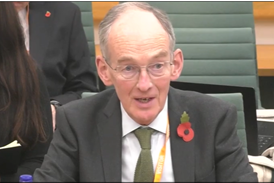
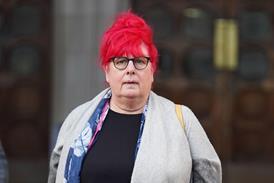



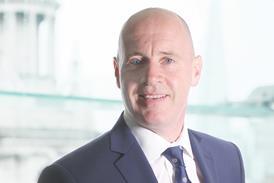




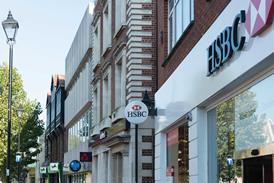




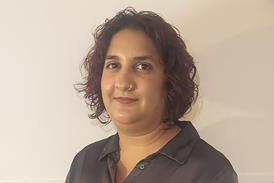

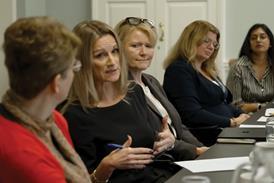







No comments yet